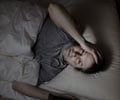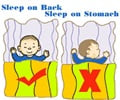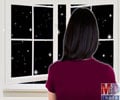Diagnosis of Narcolepsy
Suspicion of narcolepsy starts with a strong clinical history and it can be confirmed by sleep laboratory tests like polysomnogram and multiple sleep latency tests.
Excessive Sleepiness is seldom considered a disease.
Hence the diagnosis of this very disabling illness is not made until many years after the onset of its symptoms. Narcolepsy is diagnosed in most patients 10 to 15 years after the first symptoms appear. Besides lack of awareness both among the public and medical profession, this long interval can also be due to factors such as:
- The slow onset of the disorder
- The variability of the symptoms
Clinical diagnosis of narcolepsy is based on the recognition of:
- Excessive daytime sleepiness.
- Uncontrollable sleep.
- Observed cataplexy, and
- The exclusion of other causes of excessive daytime sleepiness.
Doctors advice patients to maintain a sleep dairy to ascertain the quality of sleep and rule out the presence of other sleep disorders.
The
Daytime sleepiness is common to many sleep disorders, therefore a strong clinical history needs to be supported by laboratory investigations to confirm a diagnosis.
The laboratory investigations employed to diagnose narcolepsy are
- Polysomnogram (PSG)
- Multiple Sleep Latency test (MSLT)
The
The MSLT is performed during the day. In this test the individual is asked to take four or five short naps, usually scheduled 2 hours apart, over the course of a day. The two results in this test that help to clinch the diagnosis are:
- Sleep latency test: It measures the amount of time it takes for a person to fall asleep. Because sleep latency periods are normally 10 minutes or longer, a latency period of 5 minutes or less is suggestive of narcolepsy.
- Sleep onset REM (SOREM): Rapid eye movement sleep during the first 15 minutes of sleep is called sleep onset REM (SOREM). If a person enters REM sleep at least during two of the scheduled naps, it is indicative of narcolepsy.




















